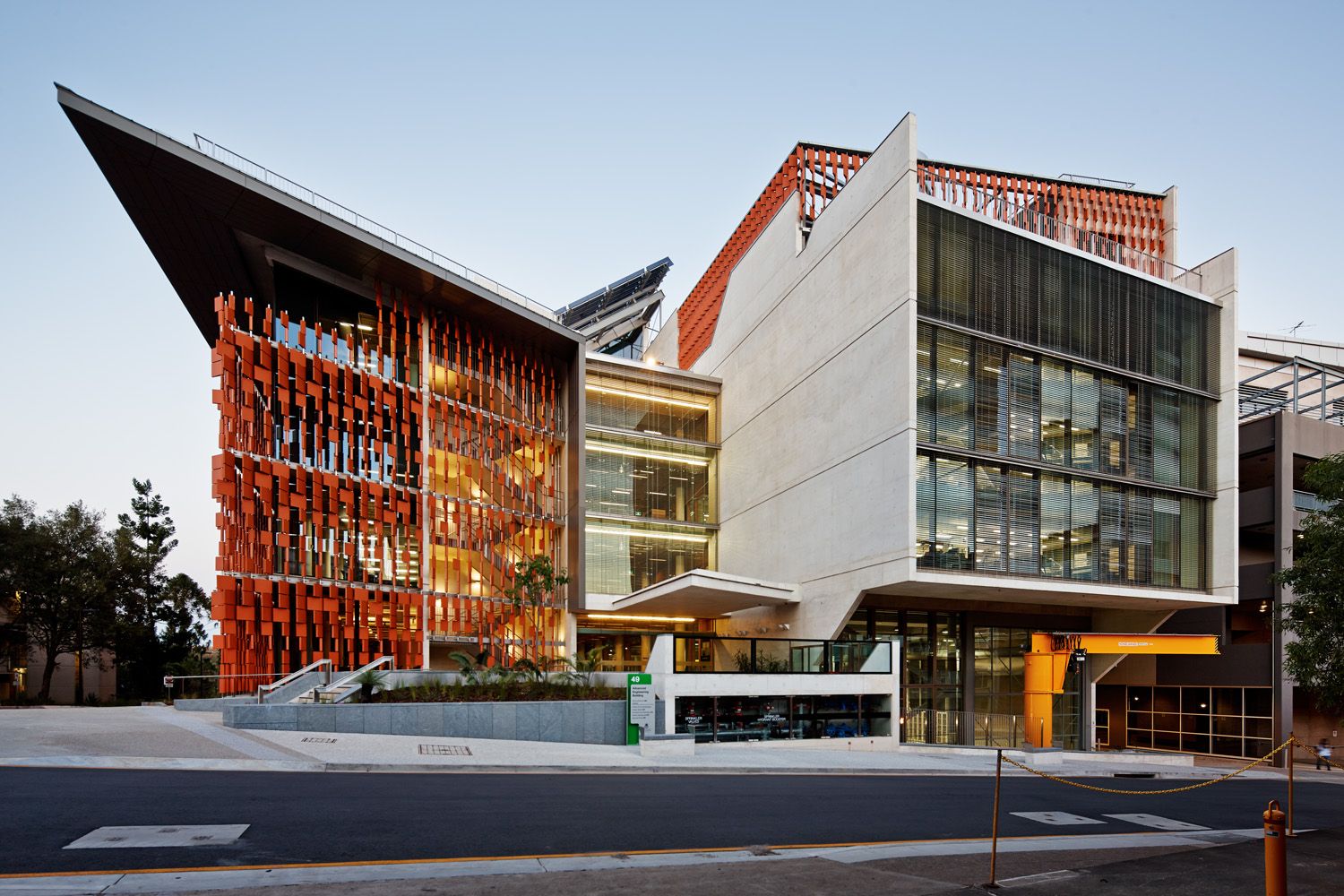In 2009 following a limited design competition, Richard Kirk Architect (now known as Kirk) was commissioned by the University of Queensland to carry out the Advanced Engineering Building (AEB) project. They worked as Architects in Joint Venture with the firm Hassell.
The AEB has challenged the traditional concept of the university workplace, with fewer closed cellular spaces, and a central atrium that is the heart of the building.
AEB has facilitated the transformation of engineering education through all aspects of research, postgraduate training and undergraduate education.
The themes Kirk drew from this potential are: a Working Building, a Transparent Building, an Expressive Building, an Interactive Building, a Flexible Building, a Sustainable Building.
Built by Besix Watpac, the AEB delivered on the University’s vision to create a building to celebrate, collaborate, create, learn, innovate, and sustain, all within an integrated engineering landscape.
The structure of the building, designed by structural and civil engineers Aurecon, is as open as possible, delivering a high level of visibility of processes and equipment to visitors and staff alike.
The large foyer area is often used to showcase manufactured goods, stimulating interest in manufacturing processes.
The building’s layout is divided into three volumes that feed off a central and communal vertical street.
Flexible learning spaces with laboratories allow for progressive teaching.
And the design concept prioritizes passive design over the mechanical.
An operable facade opens up the building, making it breathe, and work with Brisbane’s sometimes hot and humid sub-tropical climate.
The facade is covered with a terracotta screen to ensure it remains open for longer.
Completed in 2013, the AEB set a benchmark for sustainable architecture with a particular focus on the aesthetic, environmental, and structural strength of using locally produced timber in a building – including structural facade glazing and long-span roof trusses in one of Australia’s largest timber-framed auditoriums.
The AEB Auditorium was conceived as a flagship space for how the didactic pedagogy of the conventional auditorium could be transformed to one built around a performance-based mode.
Architect Richard Kirk said at the time, “The last thing we wanted was another ‘black box’ that assumed a very dry singular didactic mode (read boring). The beautiful lake setting presented an opportunity for a living and active backdrop to each presentation through a fully glazed facade. The use of a high-performance glass facade was carefully oriented to avoid unwanted glare.”
The AEB design was committed to employing renewable resources and local industry on a large and meaningful scale upon selection of the construction materials.
Specifying locally-grown timber species manufactured in Queensland demonstrated the benefits of this technology as a sustainable alternative to steel and aluminium.
Local Queensland timber was central to the buildings sustainability initiatives.
Key load-bearing elements in the main auditorium of AEB utilized engineered mixed-hardwood Glued Laminated Timber (glulam), including 380 mm x 260 mm columns with steel flitch plates, bolted glulam roof trusses spanning 25.5 metres, and glulam façade mullions.
The ABA project has won many substantial awards including the RAIA National Sir Zelman Cowen Award in 2014.
Get New Architecture Guides
Sign up below to be notified when new Architecture Guides are published so you don’t miss any.

